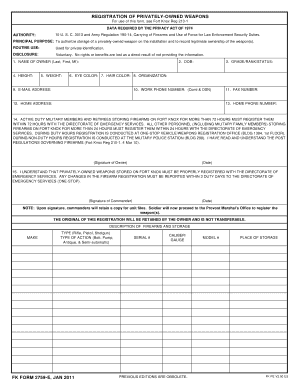Army Regulation 190-5 : What it is
Do you know that the United States Army has an implemented Traffic Code that became effective on March 16 at the U.S. Army Garrison-Hawaii? In this article, we will explore the Army Regulation 190-5 and its impact on traffic rules and regulations on the military base. So, buckle up and let's dive into the details!
1. Understanding the Army Regulation 190-5
The Army Regulation 190-5 is a comprehensive set of rules and regulations that govern traffic and motor vehicle operations on U.S. Army installations worldwide. It establishes guidelines for traffic safety, enforcement, and traffic engineering to ensure the well-being and security of military personnel and their families.

The Traffic Code aims to maintain order and safety by promoting responsible driving behaviors, preventing accidents, and enforcing traffic laws. It provides a framework for effective traffic management, ensuring a smooth flow of vehicles within military compounds.
2. New Traffic Code at USAG-Hawaii
The Traffic Code that became effective on March 16 at the U.S. Army Garrison-Hawaii introduces significant changes to enhance transportation safety and streamline traffic operations on the military base. Let's take a closer look at some of the key updates:
2.1. Strict Speed Limit Enforcement

Under the new Traffic Code, speed limit enforcement has been intensified to reduce the likelihood of accidents caused by excessive speed. This ensures that all individuals within the installation, whether military personnel, civilians, or their dependents, are protected from potential harm.
2.2. Enhanced Pedestrian Safety Measures
The Traffic Code also emphasizes pedestrian safety by implementing enhanced measures to protect individuals on foot. It addresses the importance of crosswalks, traffic signals, and the right of way, making pedestrians feel more secure while navigating the military base.
2.3. Stricter Drunk Driving Policies
Driving under the influence of alcohol or drugs poses a significant threat to everyone's safety, and the new Traffic Code recognizes this risk. It outlines stricter policies and penalties for individuals found operating a vehicle while impaired, ensuring a zero-tolerance approach to drunk driving.
3. Frequently Asked Questions (FAQs)
3.1. Can I contest a traffic violation on a military base?
Yes, as a responsible military community member, you have the right to contest a traffic violation. The Army Regulation 190-5 provides a transparent process for appealing traffic tickets or citations. Ensure you follow the outlined steps within the designated timeframe to exercise your rights effectively.
3.2. Are traffic rules on military bases the same as civilian traffic laws?
While military installations adhere to many standard traffic laws, there are specific regulations that apply exclusively to military bases. These regulations are in place to account for the unique security concerns and operational requirements of military facilities.
3.3. How can I stay up to date with any future changes to the Traffic Code?
To stay informed about any updates or changes to the Traffic Code, regularly check the official U.S. Army Garrison-Hawaii website. It serves as a reliable source for the most recent information regarding policies, guidelines, and procedures related to traffic and vehicle operations on the military base.
As a responsible member of the military community, it is vital to familiarize yourself with the Army Regulation 190-5 and understand its implications. By abiding by the Traffic Code, you contribute to creating a safer and more secure environment for everyone on the U.S. Army Garrison-Hawaii base.
Remember, your adherence to traffic laws and regulations goes a long way in ensuring the overall well-being of the military community. Safe driving saves lives!
(U//FOUO) U.S. Army Regulation 190-56 Civilian Police And Security
 Image Source : publicintelligence.net
Image Source : publicintelligence.net civilian fouo
New Traffic Code Becomes Effective March 16 At USAG-Hawaii | Article
 Image Source : www.army.mil
Image Source : www.army.mil hawaii usag
Pin On WWII Combat
 Image Source : www.pinterest.com
Image Source : www.pinterest.com battalion wwii anzio 191st ernie pyle gis beachhead 777th correspondent sherman m4 olimpicos juegos captain 1916 timetoast reporters origins pulizter
Fk 2759 Form - Fill Online, Printable, Fillable, Blank | PdfFiller
 Image Source : www.pdffiller.com
Image Source : www.pdffiller.com registration knox 2759 fillable pdffiller army privately owned fk
Fort Rucker RV, Boat Storage Policies Change | Article | The United
 Image Source : www.army.mil
Image Source : www.army.mil rucker policies recreational sandboxx
13 Army Dd Forms - Free To Edit, Download & Print | CocoDoc
 Image Source : cocodoc.com
Image Source : cocodoc.com FH REG 190-5 Fort Hood Traffic Code.pdf - III Corps And Fort Hood
 Image Source : www.coursehero.com
Image Source : www.coursehero.com hood fort
Army Bah Regulation 210-50 - Army Military
 Image Source : armymilitary.net
Image Source : armymilitary.net Civilian fouo. Army bah regulation 210-50. Registration knox 2759 fillable pdffiller army privately owned fk. 13 army dd forms. Fort rucker rv, boat storage policies change